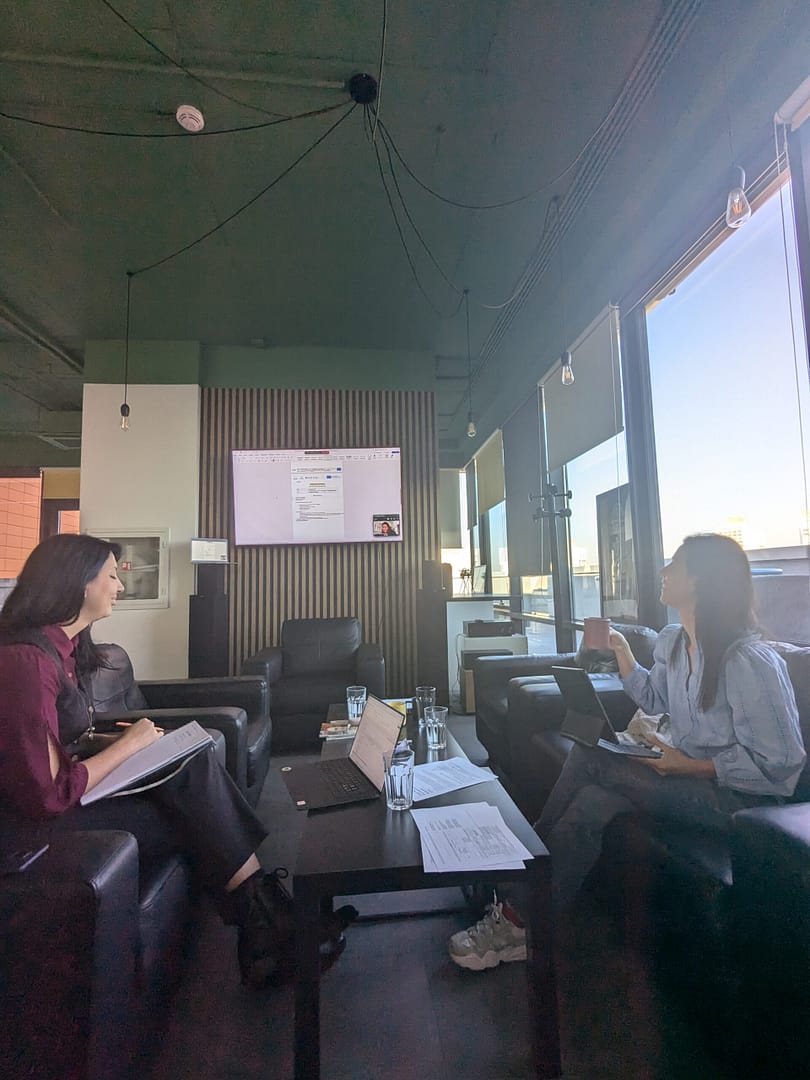Learning Outcomes:
- Participants will improve their knowledge and understanding about the European Union’s environmental policies;
- Participants will improve their soft skills, in particular team-work, communication and critical thinking;
- Participants will improve their digital skills, especially in the area 1 (Information and literacy) of the DigComp 2.2;
Duration:
120 minutes
Materials needed:
- PPT Presentation
- laptop
- projector
- flipchart
- makers
- pen
Preparation
The trainer should be familiar with the Jigsaw learning strategy in detail.
Description
PART 1
- The trainer introduces the topic with a brainstorming game:
- The trainer writes the words “EU” and “Environment” on the board.
- She/he asks each participant to suggest words or short expressions that they associate with the European Union and with the environment.
- The trainer will write the suggested words on the board, around the two main words (EU, Environment) to form a word cloud. For a better result, this could be done also through an app like Mentimeter, which will automatically show the words that were repeated more than once by participants.
- The trainer encourages the participants to think about what they have suggested by answering the questions:
- Are words showing a generally positive or negative feeling(s)?
- What are the most common associations with the EU and with the Environment?
- Is there any word or concept that was associated to both the EU and the Environment?
- Which associations stand out (they were repeated by most of participants, or they appear to be particularly important)?
PART 2
- Starting from the discussion around the word clouds, the trainer presents the topic:
EU policies protects the environment and seek to minimize risks to the climate, human health and biodiversity.EU citizens benefit from some of the highest environmental standards in the world.The EU and national governments have set clear goals to guide European environmental policy and a vision of where we need to be by 2050, supported by dedicated research programmes, legislation and funding.The main goals of the EU Environmental Policies are:
-protection, conservation and improvement of the EU’s natural capital;
-to transform the EU into a resource-efficient, green and competitive low-carbon economy;
-protects EU citizens from environmental pressures and risks to health and well-being.
2. After the presentation of the topic, the trainer explains to participants that they will work together to research the topic in detail and get to know better about EU environmental policy.
3. He/she will describe how the collective research will work, based on the Jigsaw method.
The trainer explains that the method involves creating 3 groups of “experts”, which will be in charge of researching, collecting data and information on a specific topic.
At the same time, small groups (3 or 6 participants), will be created. These groups, called Home Groups, will be formed by 1 or 2 “experts” on each topic. The main idea is that, working in a “patchwork”, small groups of participants become experts on a specific topic and they will explain it to their Home Group.
Thus, within each Home Group, each participant will be an “expert” teaching others but he/she will also learn about other topics from the other “experts”.
The method allows participants to critically read and synthesize texts and gain new understandings from their fellow participants about the topic as a whole.
4. After having explained the method, the trainer will divide the participants in groups of three, according to the 1-2-3 principle, with the number of groups depending on the number of participants. These will be the “home groups “.
5. The trainer will inform participants about the three topics on which, in groups of experts, they will do research. In this case the topics will be:
- main principles and framework of the EU’s environmental policy;
- historical development of the EU’s environmental policy;
- EU strategies for environmental policy
6. The “home groups” meet and each member of the group decides on which topic they will be the “expert”.
7. The trainer provides a framework for time management, informing participants that the will have:
- 20 minutes for the research work of the “expert” groups;
- 15 minutes in each home groups so that the three experts can share and explain to each other what they have learned on their specific topic.
8. The trainer discusses the rules of gathering in the “expert groups” and gives directions as each “expert” reports the information learned.
9. The trainer forms the “expert groups” and gives key questions to help them gather information:
First group – the main principles and framework of the EU’s environmental policy:
- The precautionary principle
- Principle of prevention
- Correcting pollution at source
- The “polluter pays” principle.
Second group – historical development of the EU’s environmental policy:
- The Stockholm Declaration of 1972.
- The 1992 Rio Declaration.
- The Single European Act of 1987
- The Maastricht Treaty of 1993.
- The Treaty of Amsterdam from 1999.
- The 2007 Treaty of Lisbon.
Third group –EU strategies for environmental policy:
- The European Green Pact.
- Strategy for biological diversity until 2030.
- The farm-to-table strategy.
- Zero Pollution Action Plan
- The new circular economy action plan
10. After 20 minutes, the trainer invites the “experts” to join their home group to share what they have learned.
11. During the 15 minutes of work of the home groups, the trainer guides participants/“experts” in reporting the learned information and he/she reminds participants that all members of the “home group” must understand the topic from each other.
Once all groups have finished the sharing phase, the trainer will start the debriefing by asking participants to explain what they have learned both as experts and from the other experts.
This will be a chance to see if some participants have not fully grasped a topic and allow them to learn from each other by discussing with members of other “home groups”.
Debriefing
It is expected that this topic will be quite new to a large part of the participants, so the trainer should be particularly interactive and liven up the discussion on this “boring” topic.
The trainer can guide the debriefing discussion by asking questions such as:
- Do you think that European environmental principles and strategies really have an impact in your country?
- Do you think that there should be more such trainings for familiarization with environmental laws?
- Which principle was most interesting to you?
- Which strategy do you think will be the easiest to implement?
- Which law is most applicable?
Tips
Create a pleasant atmosphere by providing soft background music.
Ensure that both the “home” and “expert” groups work comfortably at a distance from each other, including possibly outside the main hall. The activities can also take place outside in a creative setting.
Participate in the work of each “home” and “expert” group to ensure that the groups are performing their tasks and managing their work well; ask the groups to stop and think about how they check that everyone understands and ensure that everyone’s voice is heard;
Monitor group members’ understanding by asking questions and restating information until it is clear that all group members understand the questions.
Although information on EU environmental legislation is expected to be brand new to most participants, they should be encouraged to present their views on any of the topics through their own impressions of reality or what they have read, learned in school, etc.
Handouts and resources
The trainer(s) can use these handouts for the session or create their own, as long as the same basic concepts are included (EU environmental policies etc).
More To Explore
Co-Design Processes and Methodologies
Learning Objectives (LOs)
Mentoring methodologies and strategies
Learning Objectives (LOs)



